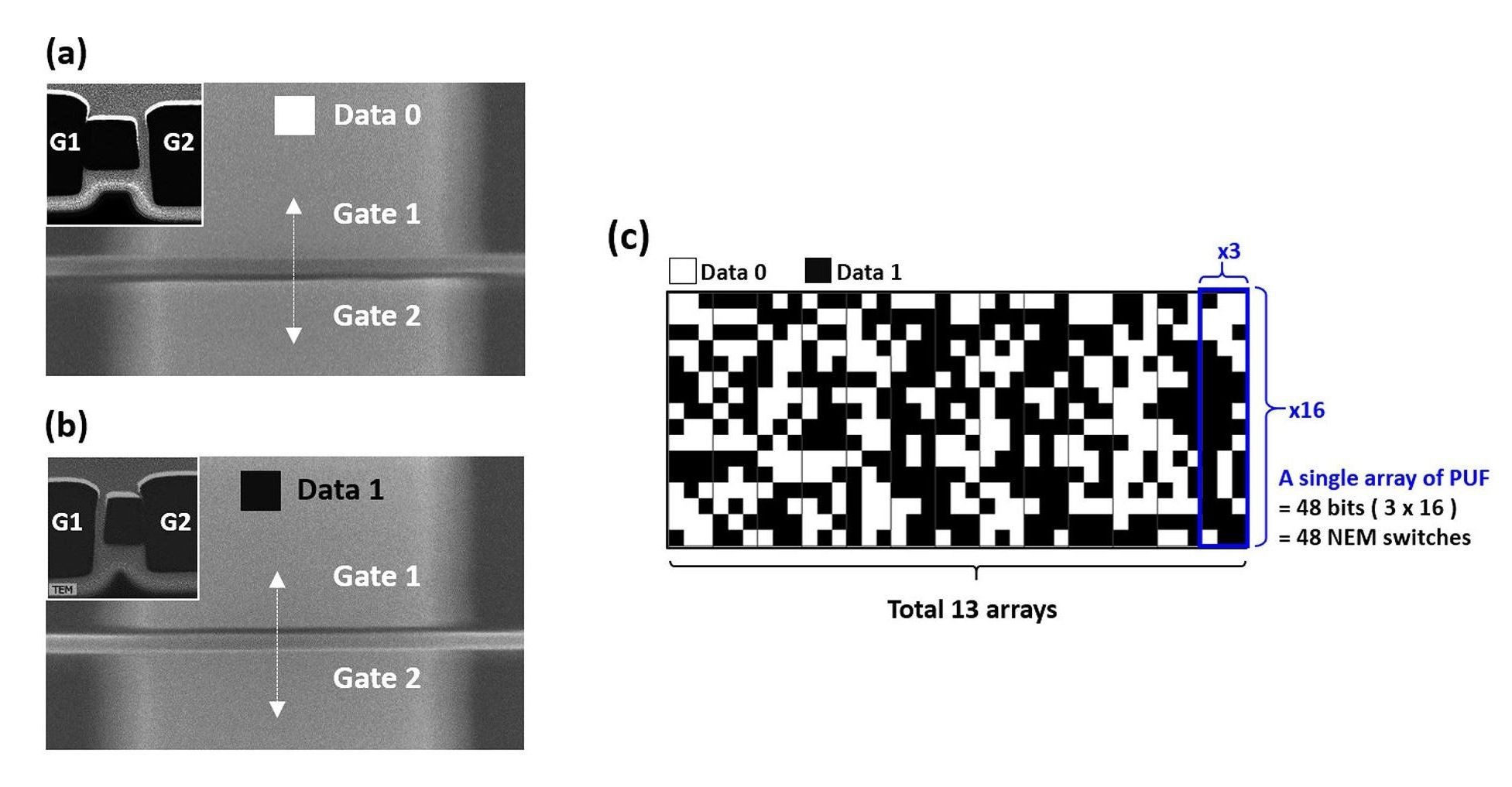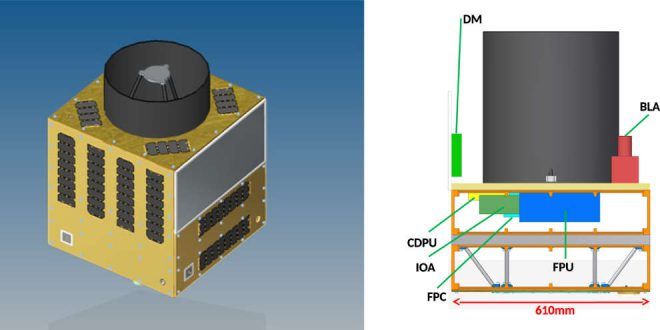Quantum cryptography has never been possible over long distances. But the first quantum communications satellite is rewriting the record books.



The Chinese “Micius” satellite has successfully set up the world’s most secure video conference, using quantum cryptography to connect scientists in Europe and China for an unhackable, intercontinental chat.
The feat marks another milestone for the satellite, officially called Quantum Experiments at Space Scale (QESS), which only last year was making headlines for transmitting an “unbreakable” quantum code to the Earth’s surface.

WASHINGTON — It should be no surprise that China is moving to challenge the United States for dominance in space, cyber, artificial intelligence and other key technologies that have wide national security applications. But the question that is still being debated is whether the United States is taking this threat seriously.
This may not be a Sputnik moment, but the United States could soon be unpleasantly surprised as China continues to shore up its domestic capacity to produce high-end weapons, satellites and encryption technologies, a panel of analysts told the House Armed Services emerging threats and capabilities subcommittee.
At the Tuesday hearing, Subcommittee Chairman Rep. Elise Stefanik, R-N.Y., said lawmakers are not entirely convinced that China’s dominance in many technology sectors is a “foregone conclusion.” But the committee does believe that China’s technological accomplishments should inform U.S. policies and defense investments. [The Most Dangerous Space Weapons Concepts Ever].

Back in April of 2017 Bitcoin.com launched a notary service that was based on top of the bitcoin core (BTC) blockchain. However, due to the transaction bottleneck and extremely high fees, the notary service became unsustainable. Now Bitcoin.com has re-launched the notary using the bitcoin cash (BCH) blockchain, and anyone in the world can prove ownership for only 0.0005 BCH (about $0.97).
Also read: Lots of Optimism at the Miami Bitcoin Conference This Week
This week Bitcoin.com has re-launched the blockchain-based notary service that was once tethered to the bitcoin core blockchain. Unfortunately, the service did not work correctly because of transaction backlog, and high network fees to verify documents. Now the infrastructure is tied to the bitcoin cash blockchain making document verification extremely cheap, and fees are practically non-existent. Right now a user can upload a document for only 0.0005 BCH ($0.97), and the network transaction fee is less than a penny. (It’s important to note that records don’t actually “exist” on the chain per say, it is merely timestamped encrypted data that is tied to the file that’s processed into a valid BCH transaction.) Not only that but the proof will be verified in less than ten minutes, and you can rest assure the notarization service will be validated.

A joint China-Austria team has performed quantum key distribution between the quantum-science satellite Micius and multiple ground stations located in Xinglong (near Beijing), Nanshan (near Urumqi), and Graz (near Vienna). Such experiments demonstrate the secure satellite-to-ground exchange of cryptographic keys during the passage of the satellite Micius over a ground station. Using Micius as a trusted relay, a secret key was created between China and Europe at locations separated up to 7,600 km on the Earth.
Private and secure communications are fundamental for Internet use and e-commerce, and it is important to establish a secure network with global protection of data. Traditional public key cryptography usually relies on the computational intractability of certain mathematical functions. In contrast, quantum key distribution (QKD) uses individual light quanta (single photons) in quantum superposition states to guarantee unconditional security between distant parties. Previously, the quantum communication distance has been limited to a few hundred kilometers due to optical channel losses of fibers or terrestrial free space. A promising solution to this problem exploits satellite and space-based links, which can conveniently connect two remote points on the Earth with greatly reduced channel loss, as most of the photons’ propagation path is through empty space with negligible loss and decoherence.
A cross-disciplinary multi-institutional team of scientists from the Chinese Academy of Sciences, led by Professor Jian-Wei Pan, has spent more than 10 years developing a sophisticated satellite, Micius, dedicated to quantum science experiments, which was launched on August 2016 and orbits at an altitude of ~500 km. Five ground stations in China coordinate with the Micius satellite. These are located in Xinglong (near Beijing), Nanshan (near Urumqi), Delingha (37°22’44.43’‘N, 97°43’37.01” E), Lijiang (26°41’38.15’‘N, 100°1’45.55’‘E), and Ngari in Tibet (32°19’30.07’‘N, 80°1’34.18’‘E).

DISA director Lt. Gen. Alan Lynn talks about the tech he’s eyeing, some of which is barely out of the theoretical realm.
Tomorrow’s soldiers will wield encrypted devices that unlock to their voices, or even their particular way of walking, and communicate via ad-hoc, software-defined networks that use not radio waves but light according to Lt. Gen. Alan Lynn, who leads the Defense Information Systems Agency, the U.S. military’s IT provider. On Tuesday, Lynn talked about next-generation technologies that DISA is looking into, some of which are barely experimental today.
Here are few of the key areas:

WiFi security hasn’t changed much since WPA2 came to be in 2004, and that’s becoming increasingly apparent when public hotspots are frequently risky and glaring exploits are all too common. It’s about to get a long-due upgrade, though: the Wi-Fi Alliance plans to roll out a WPA3 standard that addresses a number of weak points. For many, the highlight will be individualized data encryption. Even if you’re on an open public network, you won’t have to worry quite so much about someone snooping on your data.
You’ll also see safeguards even when people have terrible passwords, and a simplified security process for devices that have either a tiny display or none at all (say, wearable devices or smart home gadgets). And companies or governments that need stricter security will have access to a 192-bit security suite.
WPA3 should arrive sometime in 2018, and comes on the back of other improvements like more thorough testing to catch potential vulnerabilities before they require emergency patches. These initiatives aren’t going to guarantee airtight security when you’re at the coffee shop, but they could at least eliminate some of WiFi’s more worrying flaws.

Most of the cryptographic methods that keep important data secure use complex encryption software, and as a result, consume large amounts of power. As more and more electronic devices are being connected to the internet, there is a growing need for alternative low-power security methods, and this is often done by basing the security on hardware rather than software.
One of the most promising approaches to hardware-based, low-power security is to derive cryptographic keys from the randomness that inherently and uncontrollably emerges during the fabrication process of nanoscale devices. These methods, called “physical unclonable functions” (PUFs), convert the random variations in the physical devices into the binary states of “0” and “1” to create unique, random cryptographic keys. These keys can then be used to encrypt data into cipher text, as well as decrypt it back into plain text, in a process that remains secure as long as the key remains private.
However, one of the biggest challenges facing PUF technology is its vulnerability to harsh environments. Since the physical randomness that forms the basis of the key usually arises from variations in electrical characteristics, and electrical characteristics are affected by external factors such as high temperatures and radiation, these devices often do not preserve their states when exposed to such conditions.

The Canadian Space Agency (CSA) has awarded $1.85M contract to the University of Waterloo for the Quantum Encryption and Science Satellite (QEYSSat) mission.
The QEYSSat mission was one of two projects cited in the 2017 budget when it was unveiled in March of this year. In April, the government sent Innovation Science and Economic Development (ISED) Minister Navdeep Bains to the CSA’s headquarters to formally announce the funding for the QEYSSat mission along with funding for a radar instrument that will be developed for a future orbiter mission to Mars and to announce the Canadian CubeSat Project. The $80.9M of funding would be over five years.
A short history of the QEYSSat mission.

Cryptography and radar were technologies that won World War 2. Broken codes let the allies know where major forces were being moved. So the US fleet could choose where to intercept the Japanese Navy for the Battle of Midway. Radar and sonar then provided realtime tracking of the Japanese forces during the battle.
This is a summary of information from a Foreign Policy article by Thomas E. Ricks.
Quantum entanglement, quantum superposition, and quantum tunneling can be applied in new forms of computation, sensing, and cryptography.